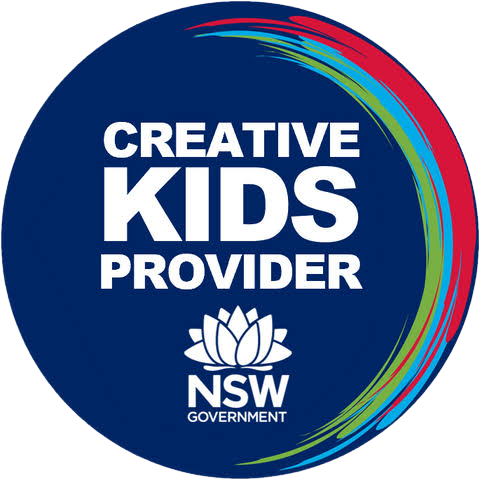Welcome to the Marquis Education Blog
The Art of Public Speaking: Tips for Overcoming Stage Fright and Captivating Your Audience

Public speaking is an art form that has the power to inform, inspire, and influence people. It's a skill that can be learned and perfected over time, and it plays a crucial role in various aspects of life, from academic presentations to professional speeches and even casual conversations. At Marquis Education, we recognize the significance of effective communication and the impact it can have on personal and professional growth. In this comprehensive blog post, we will delve deep into the art of public speaking, offering practical tips, strategies, and insights to help you overcome stage fright, connect with your audience, and become a captivating and confident speaker.
Understanding Stage Fright: The First Step to Overcoming It
Stage fright, also known as performance anxiety, is a common phenomenon that many individuals experience when facing an audience. The feeling of nervousness or apprehension before speaking publicly is natural and can actually be harnessed to enhance your performance.
Insight: Acknowledging that stage fright is a universal experience can help normalise your emotions and reduce their intensity.
Tips:
- Practise deep breathing exercises to calm your nerves before taking the stage.
- Reframe your nervousness as excitement, channelling that energy into a dynamic presentation.
1. Thorough Preparation: Building Confidence from Knowledge
One of the most effective ways to combat stage fright is to be well-prepared. When you know your material inside out, you can focus on connecting with your audience rather than worrying about forgetting your content.
Insight: Preparation not only boosts your confidence but also helps you adapt to unexpected situations.
Tips:
- Research your topic extensively to gain a deep understanding of the subject matter.
- Organise your content logically, with a clear introduction, main points, and a memorable conclusion.
2. Tailoring Your Message to Your Audience
Understanding your audience's needs, interests, and expectations is essential for delivering a speech that resonates with them.
Insight: An audience-centric approach demonstrates your consideration and respect for your listeners.
Tips:
- Research your audience's demographics, cultural background, and prior knowledge of the topic.
- Craft your message with relatable anecdotes, examples, and language that speaks to your audience's experiences.
3. Practising for Perfection: The Key to Confidence
Practice is the cornerstone of effective public speaking. Regular rehearsal not only helps you polish your delivery but also boosts your confidence on stage.
Insight: Repeated practice enables you to internalise your content, making your speech feel more natural and engaging.
Tips:
- Practice in front of a mirror to observe your facial expressions, gestures, and body language.
- Record yourself delivering the speech and critically analyse your performance to identify areas for improvement.
4. Mastering Nonverbal Communication: Your Body Speaks
Your body language, gestures, and facial expressions play a pivotal role in conveying your message and connecting with your audience.
Insight: Nonverbal cues can either enhance or detract from the impact of your words.
Tips:
- Maintain eye contact with your audience to establish a sense of connection and credibility.
- Use gestures purposefully to emphasise key points and add visual interest to your presentation.
5. The Power of Vocal Variety: Infusing Life into Your Speech
A dynamic voice keeps your audience engaged and intrigued. Utilise vocal variety to convey emotions, highlight key points, and maintain a rhythm in your speech.
Insight: A monotonous voice can lull your audience, while a varied tone captivates their attention.
Tips:
- Practice modulation of your pitch, pace, and volume to prevent a flat delivery.
- Use pauses strategically to allow your audience to digest information and build anticipation.
6. Enhancing Your Message with Visual Aids
Visual aids, when used effectively, can complement your speech and make complex concepts more understandable.
Insight: Visual aids should support your message, not overshadow it.
Tips:
- Create clear and concise visual aids that highlight key information.
- Incorporate visuals such as graphs, images, or videos that enhance your content's visual appeal.
7. Creating Engagement: Connecting with Your Audience
Engaging your audience creates a two-way communication dynamic that keeps their attention and involvement.
Insight: Engaged listeners are more likely to retain and remember the information you're sharing.
Tips:
- Ask thought-provoking questions to stimulate audience reflection and interaction.
- Incorporate relatable anecdotes, humour, or personal experiences that resonate with your audience.
8. Embracing Spontaneity: Handling Impromptu Speaking
Being prepared to speak on the spot demonstrates confidence and expertise in your subject matter.
Insight: Impromptu speaking showcases your ability to think on your feet and adapt to unexpected situations.
Tips:
- Practise impromptu speaking by participating in debates, discussions, or spontaneous presentations.
- Focus on delivering concise and thoughtful responses that address the core of the question.
9. Seeking Feedback: A Path to Continuous Improvement
Constructive feedback is invaluable for refining your public speaking skills and enhancing your overall performance.
Insight: Embrace feedback as an opportunity for growth and refinement.
Tips:
- Seek feedback from peers, mentors, or even recording yourself to identify areas for improvement.
- Use feedback to adjust your content, delivery, and overall presentation style.
10. Managing Stage Fright: Harnessing Your Energy
Stage fright is a natural response to the pressure of public speaking. Learning to manage it can significantly improve your performance.
Insight: Embrace stage fright as an indication of your investment in your presentation's success.
Tips:
- Practise relaxation techniques, such as deep breathing or progressive muscle relaxation, to calm your nerves.
- Visualise a successful performance before taking the stage, focusing on the positive outcome.
Public speaking is a skill that can transform your ability to communicate, influence, and inspire others. At Marquis Education, we believe that with the right strategies and practice, anyone can become a confident and captivating speaker.

4.03/5 Celebration Drive Bella Vista NSW 2153
Mon - Fri 4.00 pm - 8.00pm
Sat - Sun 9.00 am - 4.00pm
We acknowledge the Traditional Owners and communities of the lands on which our business operates. We pay our respect to Aboriginal and Torres Strait Islander cultures and to their Elders past and present.
All Rights Reserved | Marquis Education Pty Ltd











